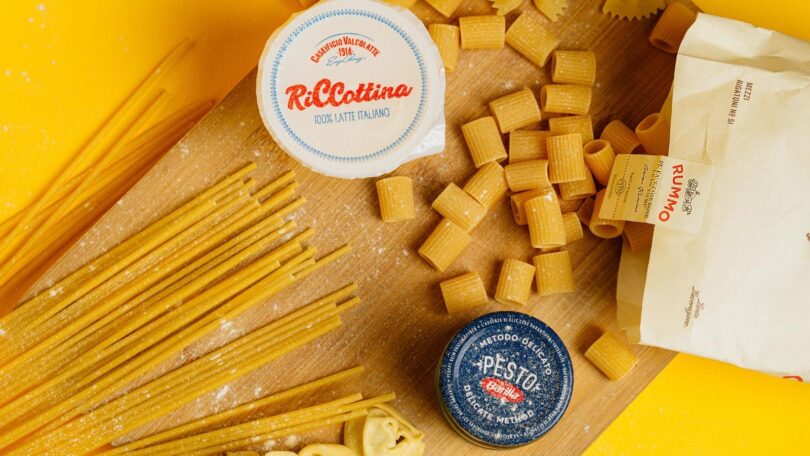For cheese-lovers who have always dreamed of making their own wheels of creamy curds, now is the time for you to give home cheese making a try! With the right ingredients, equipment, and knowledge, crafting delicious, flavorful cheeses at home is easier than you might think. Lay out your cheesemaking mat and let’s get going—it’s time to make a masterpiece!
1. The Basics of Cheese Making
From farm-style cheddar to stretchy mozzarella, it’s no secret that cheese is one of the most beloved foods across the planet. With the right equipment and ingredients, you can craft your own delicacies in the comfort of your own home. Here’s our beginner’s guide to making cheese right from the start!
- Sanitizing
- Sanitizing is the crucial first step in cheese making. After all, you don’t want your cheese contaminated with bacteria.
- Before you begin making any cheese, make sure you clean and sanitize all the equipment and area you’ll be using. This will help ensure your cheese is safe to eat and will last longer too.
- Acidification
- Once you’ve sanitized your equipment and area, you’re ready to start making cheese. The first step is to acidify the milk by adding an acid such as lemon juice, vinegar, or citric acid. This process helps separate the milk’s proteins and cause them to coagulate into curds.
- Adding the acid slowly and in small amounts will give you more control over the process and help ensure your cheese has the consistency you’re looking for.
- Curd Cutting
- Once the curd has formed, you’re ready to cut it into smaller pieces with a curd cutter. This helps to release the whey (the watery liquid that was once part of the milk) and helps the cheese firm up.
- Determining how large you want the curds to be is part of the art of cheese-making, but as a general rule smaller curds will give you a creamier, softer cheese while larger curds will be firmer and easier to shape.
- Draining The Whey
- Once the curd is cut, it’s time to drain off the whey. Gravity can help with this process, or you can use a curd cloth to capture the curds and press out as much whey as possible.
- The amount of whey you drain off will affect the moisture content of the cheese, so experiment with this until you’re happy with the texture and creaminess of the cheese.
- Salting The Curds
- Cheese-making often requires salt in order to improve flavor, but it can also be used to help draw out excess moisture from the curds. Salting the curds helps them dry out and increases their shelf life, so this step shouldn’t be skipped.
- Shaping And Aging The Curds
- Once the curds are dry and firm, it’s time to shape them. You can shape the cheese with your hands, a ladle, or even a mold. Once it’s shaped, you’ll want to age the cheese in a cool and dry environment for at least a few weeks. This helps the cheese develop its flavor and texture.
- Once the cheese is aged, it’s finally ready to be enjoyed!
2. The Science Behind Crafting Creamy Curds
If you have ever wondered how to make cheese at home, crafting creamy curds is a great place to start. Cheese making involves three main steps: separating the curds from the whey, draining the curds, and then pressing them. All of these steps can be done in the comfort of your own kitchen, with just a few basic tools.
To begin the cheese making process, heat up your milk of choice – cow’s, sheep’s, or goat’s. Heat the milk to the point where it almost reaches its boiling point but not quite. Next, add a coagulating agent, such as lemon juice or vinegar, followed by a sprinkle of salt, to help separate the solids (the curds) from the liquid (the whey). As the mixture starts to separate, use a spoon to quickly stir and stir – this will create smaller, more creamy curds.
Once the curds and whey are well-separated, it’s time to strain the curds. Line a colander with cheesecloth and carefully pour the mixture into it. Let the mixture drain in the cheesecloth for a few minutes, then carefully move the curds into a cheese mould. Gently press down on the mould to squeeze out any remaining whey.
At this point, the curds are already done and can be eaten! Alternatively, if you’re looking for creamier curds, you can keep pressing and draining them. To do this, layer the mould with cheesecloth, refill with curds and press down. Repeat this process until you get the desired texture. Once complete, you have yourself creamy, delicious curds that are perfect for enjoying with fresh bread, crackers, or on their own.
3. Setting Up the Right Environment
When it comes to cheese making at home, the environment plays an integral role in how successful the results will be. If not done correctly, the cheese can become lumpy or unpleasant in taste - a huge letdown after all the hard effort that went into making it! Here are three tips for mastering the art of cheese making at home and achieving perfect curds:
- Ensure you have the right materials. Cheese-making requires a few specialized items such as cheesecloth, a thermometer, and a few molds or pans. Try to get the best quality cheesecloth, since cheaper options may cause the cheese to retain too much liquid.
- Create a clean working space. It’s important to keep your work space bacteria-free in order to produce clean and healthy cheese. Make sure all surfaces are wiped down and always wear clean gloves when handling dairy products.
- Maintain proper temperature. Most cheeses need to be kept at a certain temperature throughout the entire process in order to achieve the desired flavor and texture. Invest in an accurate thermometer to ensure your cheese is not spoilt.
With the right environment, the perfect creamy cheese will be right at your fingertips. For the perfect curds with every batch of cheese you make, keep these three tips in mind to ensure success.
4. Ingredients for Homemade Cheese
If you’ve ever dreamt of making cheese at home, you’ll be pleased to know that it’s not hard to do. All you need is the right combination of ingredients and with a little patience and love – creamy, delicious curds can be yours! Here’s what you’ll need for cheese-making at home:
- Milk: Whole milk is best for cheese-making, although you can also choose to use skimmed or semi-skimmed milk. If using a different type of milk, the quantities of rennet, starter cultures, and salt may need to be adjusted accordingly.
- Starter cultures: This is essential for the development of flavor and texture, and can be bought in powdered form from cheese-making suppliers. Different cultures are suitable for different types of cheese.
- Rennet: This helps to set the milk and is available in either liquid or tablet form. Natural animal rennet is best.
- Salt: Used for flavor, as well as to reduce moisture content and slow down the growth of harmful bacteria.
- Calcium Chloride: This helps toughen the curds, making them easier to work with and reducing the risk of breaks. It’s also thought to increase microbial stability in the finished cheese.
As well as these basic ingredients, you may also choose to add herbs, spices, and other flavors as desired. With the right equipment and know-how, you can experiment and produce an almost infinite variety of cheeses.
5. Cheese Moulds and Maturation Time
Crafting creamy curds at home can seem like a daunting task, but with the right cheese moulds, a lot of patience and some guidance, it’s easier than you think. Cheese moulds come in all shapes and sizes and are designed to help give structure to the cheese during its maturation.
The maturation time of a cheese will vary depending on the type and size of mould you’ve chosen. Heavy-duty moulds can take up to 12 weeks to mature, while lighter mesh models may require a shorter maturation time of six to eight weeks.
Smaller cheese moulds, such as those a few inches in diameter, may require less time than larger ones. The general rule is the larger the cheese, the longer it takes to mature. Here are some guidelines to help you determine how long different sizes and types of cheese will need to mature:
- Mini Moulds – 4 to 5 weeks.
- Small Moulds - 6 to 8 weeks.
- Medium Moulds - 8 to 10 weeks.
- Large Moulds – 12 to 14 weeks.
Soft cheeses such as camembert and brie will require less time. Similarly, moulds with higher airflow and permeability will mature faster than those without. The maturation time of a cheese should be monitored closely to ensure it’s mature enough to eat. As a rule of thumb, monitor the cheese closely within the last three weeks of maturation, testing for ripeness, flavour and texture.
Cheese moulds are a great tool for any home cheesemaker looking to create cheese that tastes great and stores well. With the right mould, sufficient maturation time and proper storage, you’ll be able to enjoy delicious creamy curds in no time.
6. The Importance of Sanitation
Sanitation is a critical component of at-home cheese making. Failing to adhere to hygiene regulations can result in an unsanitary and potentially hazardous outcome. It is of utmost importance to use a clean environment and utensils when making cheese curds.
Start with the Basics:
- Wash hands and counters with warm, soapy water between each step
- Make sure that all mixing tools are clean and sterilized
- Handle and store the cheese curds at the recommended temperatures
Sanitizing Milk and Other Ingredients:
Before beginning the cheese-making process, the milk must be pasteurized to kill any harmful bacteria or microorganisms that are present. This can be done using proper pasteurization equipment or by using a boiling water bath. In addition, it is important to sanitize any other ingredients or additives that are being used in the cheese-making process.
Storing and Packaging Cheese:
Once the cheese curds have been properly made and are ready for storage or packaging, appropriate safety measures must be taken. Care should be taken to ensure that the cheese curds are stored at the correct temperature and in airtight packaging to avoid contamination. The cheese curds should also be labeled with an accurate expiry date for the consumer’s safety.
In conclusion, sanitation is an important part of cheese making at home. Ensuring a clean work environment and sanitizing ingredients are necessary steps to ensure that the cheese does not become contaminated. Packaging and storing the cheese curds correctly is also key to keep them safe and delicious. By following these safety regulations, anyone can create creamy and delicious cheese curds at home.
7. Troubleshooting Common Cheese Making Problems
Sometimes cheese-making can seem a bit overwhelming, but don’t worry! Despite the complexity of the process, it can be a rewarding experience if you understand the basics and troubleshoot potential roadblocks along the way. Here are seven typical cheese-making issues – along with solutions.
- Low acidity – This may happen if milk or ingredients weren’t at the right temperatures during the acidifying step, so try stirring your curds more for increased acidity. You can also raise the acidity afterward with buttermilk or white vinegar.
- Cheddar isn’t stretching – Make sure you’re stirring with a gentle and consistent motion or else you won’t achieve the correct curd stretch. Once you’ve made the necessary adjustments, the curds should stretch correctly.
- Mixing problems – To make sure your cheese mix is uniformly blended, be sure to use the correct stirring speed, and try stirring in both directions to ensure an even blend.
- Difficult to separate curd from whey – If you’re having trouble separating these two components, it’s likely your mixture is too hot. Let it cool down a bit and then try again, using thermal gloves if need be.
- Grainy texture – If your cheese has a grainy texture, this usually happens because the curds were cut too small during the cheddaring process. Be sure to cut into larger curds and then stir more vigorously to obtain the desired texture.
- Moisture loss – If your cheese is too dry, try placing it in an airtight container and adding some water to increase the moisture level. You can also try periodically salting the cheese to help retain the liquid.
- Mold or musty odor – If there’s mold or a musty scent, you may have used contaminated equipment in making the cheese. Start over and use clean and sanitized tools.
With plenty of patience and the right techniques, you can make delicious, creamy cheese with ease. Have fun!
8. Tips and Best Practices for Making Delicious Cheese
Choosing Cheese Recipes: Before you start crafting up a cheddar cheese recipe, it’s important to choose the right kind of cheese to make. Are you interested in making a soft, creamy cheese, like Brie or Camembert? Or are you interested in a harder cheese, like a Cheddar or Gouda? Consider the type and flavor of cheese that you prefer. Once you have the recipe and necessary ingredients figured out, you can move on to the more crucial step of making cheese.
Curdle and Drain the Milk: This is the most important part of making cheese – setting it into curds and draining the whey. You can use an acid like vinegar or lemon juice to curdle the milk. Heat the milk up to 84 degrees Celsius and add half a cup of acid for every gallon. Stir it until it forms a nice, lumpy curd. Let it sit for 10 minutes away from the heat, and then carefully ladle it into cheesecloth and squeeze out the liquid and hang the curd over a bowl for draining.
Aging the Cheese: Now that the cheese has been made, you may want to age it. This process helps to create a more intense flavor. Start by wrapping the cheese in cheesecloth, followed by wax paper and then an airtight container. Place it in a cool, dark place. The growth of molds is necessary for the aging process, so the cheese must be monitored. If the mold on the cheese is grey, blue, or black, it must be discarded. White mold is good and can simply be wiped away.
Tips and Best Practices:
- Choose a cheese recipe that suits your flavor preferences.
- Curdle and drain the milk in cheesecloth.
- Use aging techniques to develop an intense flavor.
- Be sure to monitor the cheese for any bad molds.
- Clean and sanitize all tools and surfaces for cheese making.
- Be creative and experiment with recipes to create unique flavor combinations.
- Be patient – the process of making cheese takes time.
- Enjoy and savor the delicious cheese you have made.
Cheese making at home can be a rewarding experience and a great way to expand your horizons. Once you get the hang of transforming simple milk into creamy curds, you’ll be able to explore different flavors and textures through the wonders of cheese making. So why not take the plunge into this new kitchen adventure? With a little patience and some imagination, the possibilities are delicious!








